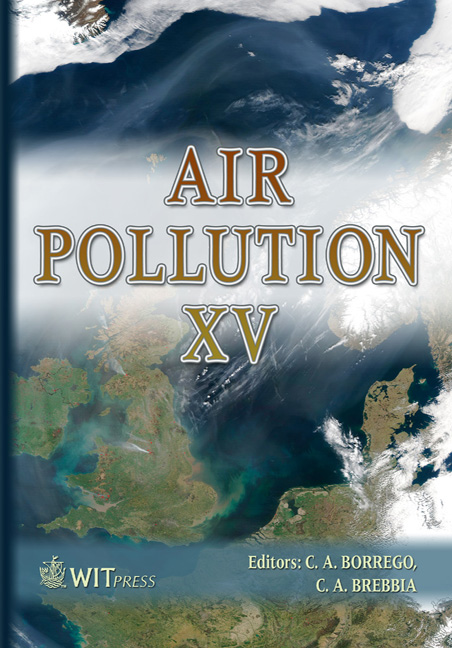Evaluation Of Industrial Sources’ Contribution To PM10 Concentrations Over A Coastal Area
Price
Free (open access)
Transaction
Volume
101
Pages
10
Published
2007
Size
919 kb
Paper DOI
10.2495/AIR070101
Copyright
WIT Press
Author(s)
A. Tanzarella, C. Mangia, I. Schipa, M. Cervino & M. Milanese
Abstract
The analysis of air quality data in a monitoring site in the southern part of the Apulia region (south-eastern Italy) has shown that it exceeds the daily mean value of particulate matter with an aerodynamic diameter less than 10 µm (PM10) established by Italian regulations in force. In the neighbourhood of the site relevant power plants are present. The aim of this study is to evaluate the contribution of these industrial sources using the RAMS [1]-CALMET [2]- CALPUFF [3] modelling system. Results show that the contribution of industrial sources is significant to the total pollution, but such a contribution explains only a small percentage of the PM10 measured in the site. The fallout of primary particulate matter has turned out very low, while the contribution of the secondary one, related mostly to SOx and NOx emission, has been higher. Meteorological and dispersion simulation indicate that the high values registered in the site can be attributed to a local source present in the little town where the station is placed and are representative of a very small area. Keywords: industrial sources, particulate matter, wind calm. 1 Introduction The atmospheric suspended particulate matter represents one of the most well-known environmental problems in the industrial countries, such as Italy. A recent study of the Italian Committee for Air Pollution [4] analyzed the characteristics of particulate pollution, especially that with an aerodynamic
Keywords
industrial sources, particulate matter, wind calm.





